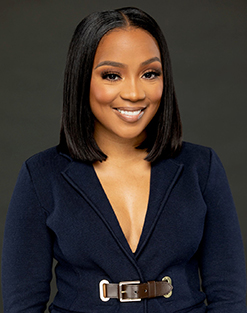
One of the things that I love most about Flint & Genesee is that it’s a great place for entrepreneurs. You don’t need millions of dollars, or even thousands of dollars, to start a business. There are countless resources available to help you get off the ground. I’ve met so many people who have done it, and they’ve done it from here.

I’ve had the pleasure to work with some of these entrepreneurs who have started businesses – including I Am My Billboard, a family-owned gym in Burton, and Red Wagon, a soul food eatery with two locations in Genesee County – through my law firm Trademark My Stuff. My firm specializes in protecting and scaling minority-owned small businesses, with a major focus on trademarks.
In my work, I often find myself referencing “Steal Like an Artist” by Austin Kleon. In his book, readers learn the best ways to honor an original artist while becoming known for their own piece of work that was inspired by the original artist. But where exactly is the line drawn in the sand, legally? Here are three things to ask yourself when considering if your intellectual property is legally too similar to another trademark.
1. Could someone easily believe the two trademarks originate from the same business or brand due to the style or appearance?
In trademark law, when comparing two different logos or brand names, the law will immediately ask, “Is there a strong likelihood of confusion between the two marks?” If the answer is yes, there is a good chance the logo or brand name that was “first-in-use” will want to ensure the “copycat” does not see the light of day.
If your creation is strikingly similar to another brand’s logo or brand name, add a distinctive word to the front of your logo or brand name to increase its likelihood of success in the marketplace, while reducing its chances of confusion for another brand.
2. Would you and the original brand owner share the same target audience?
Legally, two brands can share the same name without infringing on each other’s work by selling products that do not relate to one another and do not inherently share the same target audience. The perfect example is Dove® Soap versus Dove® Chocolate. The brands sell products that do not compete with one another for the same audience, nor do they sell products that are in direct competition with one another.
If you love a name or mark, it may not be “hands off” for you if you’re selling unrelated goods and would not share the same audience as the other mark.
3. Could your use of their mark fall under “fair use?”
Copyright law does allow for the reproduction of protected material for certain limited educational purposes without constituting any infringement. However, the “fair use” test – used to determine whether your use qualifies under this exception – is very fact-specific.
The main factors are the purposes of the use of the material (ensuring that it is for educational purposes); the amount of the work being duplicated or reproduced; and lastly the effect on the market the reproduction would have.
Ultimately, you can find confidence in knowing there is no need to recreate the wheel when it comes to your branding. However, when in doubt, be sure to consult a legal professional. While you can dance on the legal lines, you don’t want to cross them.
